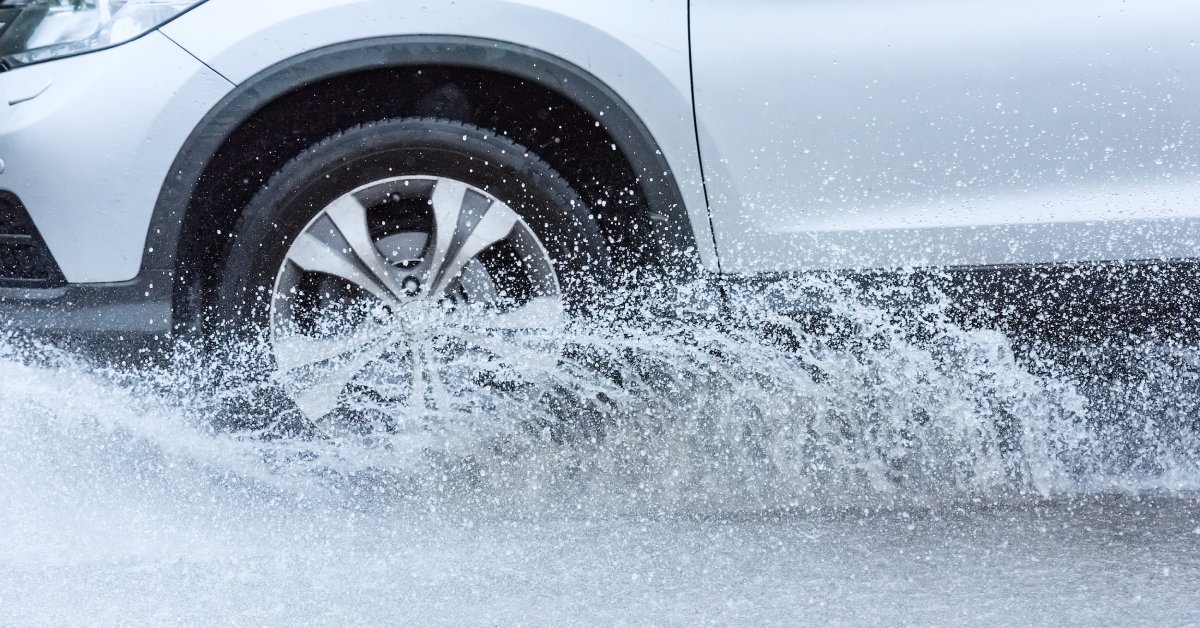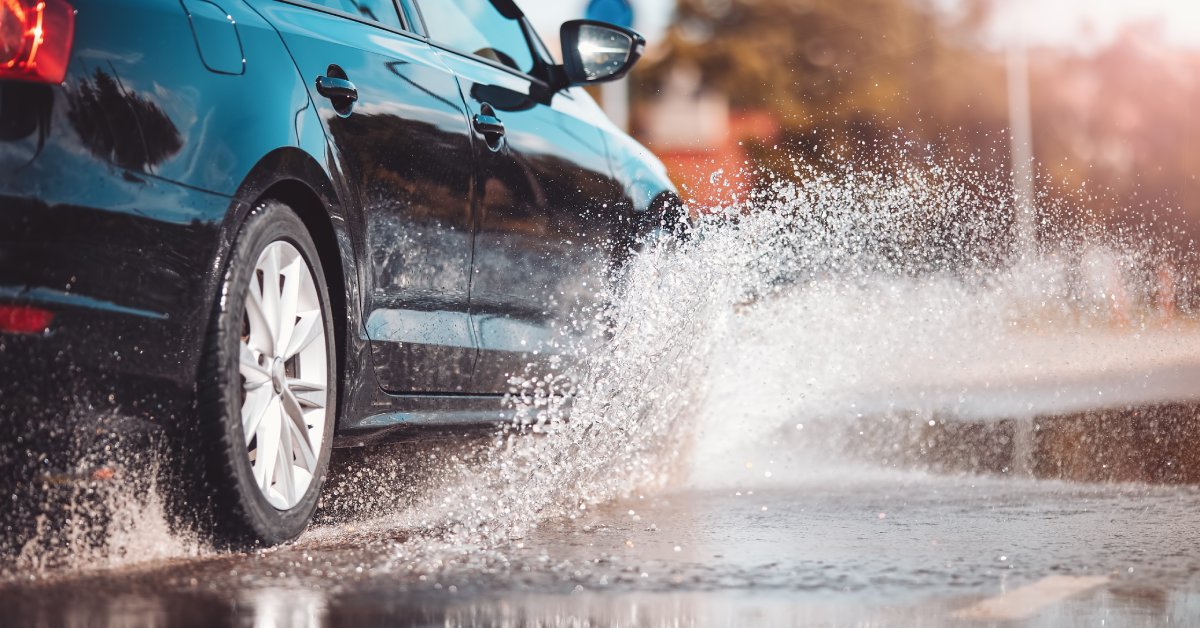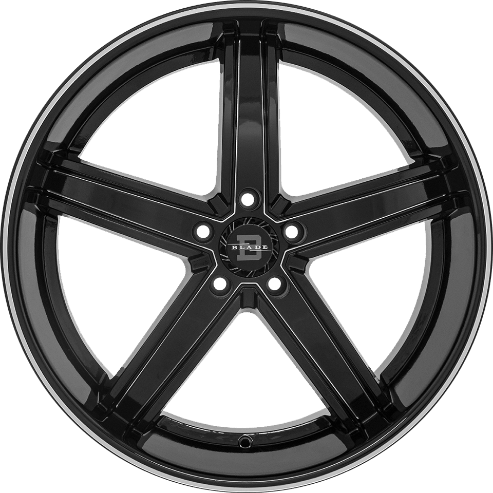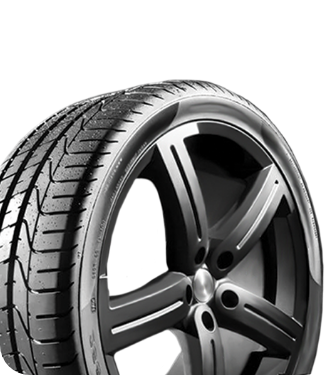

Tire Tips for Driving in Heavy Rain and Flooded Roads
Safety Tips |Navigating wet roads can be a challenge for even the most experienced drivers. Rainy weather creates slippery surfaces, reduces visibility, and increases the risk of hydroplaning, making it crucial to adapt your driving to these unpredictable conditions.
Understanding how to adjust your driving behaviors and properly maintain your vehicle is vital to keeping yourself and others safe. Keep reading for ten tire tips for driving in heavy rain and flooded roads, from checking tire tread and pressure to tips on avoiding flooded areas and driving at safer speeds. These insights will help you stay in control of your vehicle, reduce risks, and arrive safely at your destination, no matter how bad the rain gets.
1. Check Your Tire Tread Depth
Your tires’ tread depth plays a huge role in maintaining traction on wet roads. Tires with worn-down treads lose their ability to channel water away, increasing the likelihood of hydroplaning. Insert a penny headfirst into the grooves of your tire tread. It’s time for new tires if you can see all of President Lincoln’s head. New tires should have a tread depth of at least 10/32 inches for optimal performance in wet conditions.
2. Regularly Monitor Tire Pressure
Proper tire pressure ensures your tires have the right grip on wet roads. Underinflated or overinflated tires lose their ability to maintain consistent contact with the road, compromising their performance during heavy rain.
Check your tire pressure with a gauge; you’ll find the recommended PSI in your owner’s manual or on your vehicle’s door frame sticker. A quick check once a month, especially after temperature changes, can help you maintain safety.
3. Rotate Your Tires
Uneven tire wear can significantly reduce your vehicle’s traction, especially in wet or slippery conditions, increasing the risk of accidents. Over time, certain tires experience more stress depending on their position, leading to uneven wear that affects overall performance.
Regular tire rotations, typically recommended every 5,000–7,000 miles, help distribute this wear evenly across all four tires. Routine tire rotations ensure each one gets equal exposure to different road and driving conditions, ensuring consistent levels of grip and stability.

4. Use Tires Designed for Wet Roads
Different tires can handle wet roads in various ways! It might be a good idea to purchase tires specifically for slippery, potentially hazardous conditions if you live in a place that experiences a significant amount of rainfall throughout the year. All-season tires and performance tires, with their deep grooves and wide channels, truly excel when it comes to effectively pushing water away from the tire’s surface. This design enhances traction and plays a crucial role in helping you maintain control of your vehicle, ultimately keeping you safer on the road during adverse weather.
5. Avoid Driving Through Puddles
Driving through puddles might seem harmless, but doing so can lead to unexpected and costly damage. Hidden hazards, such as potholes or debris under the water, can severely damage your tires, wheels, or even your car’s suspension. Water that is deeper than a few inches increases the risk of hydroplaning, where your tires lose contact with the road, making it difficult to control your vehicle.
Always approach standing water cautiously. If you can’t gauge its depth, significantly reduce your speed or consider taking an alternate route. Even shallow water can conceal obstacles that may puncture tires or bend rims, leading to expensive repairs. It’s better to play it safe than risk damaging your vehicle.
6. Reduce Your Speed
Speeding in wet weather significantly increases the risk of losing traction and hydroplaning, which can lead to dangerous situations on the road. Wet surfaces reduce your tires’ ability to grip, making it harder to maintain control of your vehicle.
You can improve your tires’ ability to stay in contact with the road and reduce the chances of accidents by driving slowly. Additionally, slowing down gives you more time to react to unexpected hazards, such as sudden stops, puddles, or debris, ensuring a safer journey for everyone.

7. Maintain a Safe Following Distance
Slippery roads significantly reduce braking efficiency, making it harder to stop in time. Following too closely behind other vehicles increases your risk of rear-end collisions, especially during sudden stops. Adjust your following distance based on the weather to stay safe.
The typical safe following distance is about three seconds in dry conditions, but experts recommend increasing it to at least five seconds when driving in heavy rain or on wet roads. This extra space gives you more time to react and prevents accidents in challenging conditions.
8. Avoid Sudden Maneuvers
Fast acceleration, abrupt braking, and sharp turns can cause your tires to lose traction, especially on slippery surfaces, such as wet roads, ice, or gravel. Use smooth, gradual inputs on the steering wheel, accelerator, and brakes to maintain control and safety.
Avoid sudden movements that may destabilize your vehicle. Engaging anti-lock brakes (ABS) and traction control systems, if available in your car, can provide added stability and prevent skidding. Make sure to adapt your driving style to the road and weather conditions to ensure a safer journey.
9. Replace Worn-Out Tires
All drivers should know that worn tires are a serious safety risk, especially in wet conditions where traction is crucial. It’s not just about tread depth—be sure to regularly inspect your tires for signs of balding, cracking, bubbles, or other visible aging.
Experts recommend replacing your tires every six years to ensure safety, even if they haven’t reached their mileage limit. Neglecting tire maintenance can increase the risk of blowouts, hydroplaning, or losing control on rainy roads. Taking a few minutes to check your tires can make all the difference in keeping you and others safe on the road.
10. Prepare for Emergencies
Having the right tools on hand, such as a tire repair kit, spare tire, and portable air compressor, can be a game-changer during a roadside emergency. These essentials can save you time, money, and hassle when unexpected car troubles arise. It’s also important to ensure your jack is functional and that you know how to safely change a tire in case of a flat.
We highly recommend keeping these items in your vehicle, especially during the rainy season when road conditions can be more unpredictable. Preparation can make all the difference and give you peace of mind every time you hit the road.
Boost Your Safety and Control
Wet roads can be a serious safety hazard, but keeping your tires in top shape and following these tire tips for driving in heavy rain and flooded roads will help improve your road safety.
RNR Tire Express in Corpus Christi can help those driving in South Texas find affordable, quality tires for rain-prone conditions. Stop by today to check out the ideal collection of tires in Corpus Christi and prioritize your safety for every drive.





